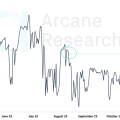The Bitcoin Fear and Greed Index remains in the “greed zone” 13 days in a row. Will BTC be able to supportbullish growth?
Bitcoin has entered the greed zone, and the fear index andgreed hit a 10-month high of 61, indicating strong bullish sentiment. The recent change in investor sentiment comes after BTC's price surged this year after months in the red. Experts share their views on how likely it is that BTC will maintain its recent price and how investors can predict whether this is another bull trap.
After months of fear around digital asset prices, investors are starting to look more confident about the prospects for Bitcoin (BTC) and other assets after the price surge in the past two weeks.
As of 2022, the index was at 25,which indicates the strong fears of investors after the collapse of FTX. The recent rally in the market led the index to hit 52 on January 15, leaving the fear zone, and has continued to rise since then. The hit of the index in the neutral zone was the first case of exit from the zone of fear in the last three quarters.
At the time of writing, the price of BTC is $23,005, indicating a price increase of more than 40% since the beginning of the year.
Sharp growth was also recorded in other digitalassets: The leading altcoin, Ethereum (ETH), also showed similar growth. The Bitcoin Fear and Greed Index optimizes social signals from various sources to determine the current market sentiment surrounding the asset. These signals for several traders indicate that BTC is becoming “bullish” (investors have become greedy) or “bearish” (investors are afraid). The index consists of scores from 0 to 100, ranging from extreme fear (orange) to extreme greed (green).
Even though the index shows that the bullsare preparing for a new breakthrough, some commentators are still skeptical about the sustainability of such hopes. At $23,005, Bitcoin has certainly made huge strides since the FTX saga that saw it trade below $17,000.
If BTC and other digital assets go back touphill, lower inflation and interest rates will be the key factor. Last year, inflation and broader macroeconomic factors drove the cryptocurrency market down after several central banks raised interest rates to curb inflation. The good news is that many governments are seeing a decline in inflation, signaling a reversal in the digital asset market, but a possible bull run or bull trap still hangs in the balance.





